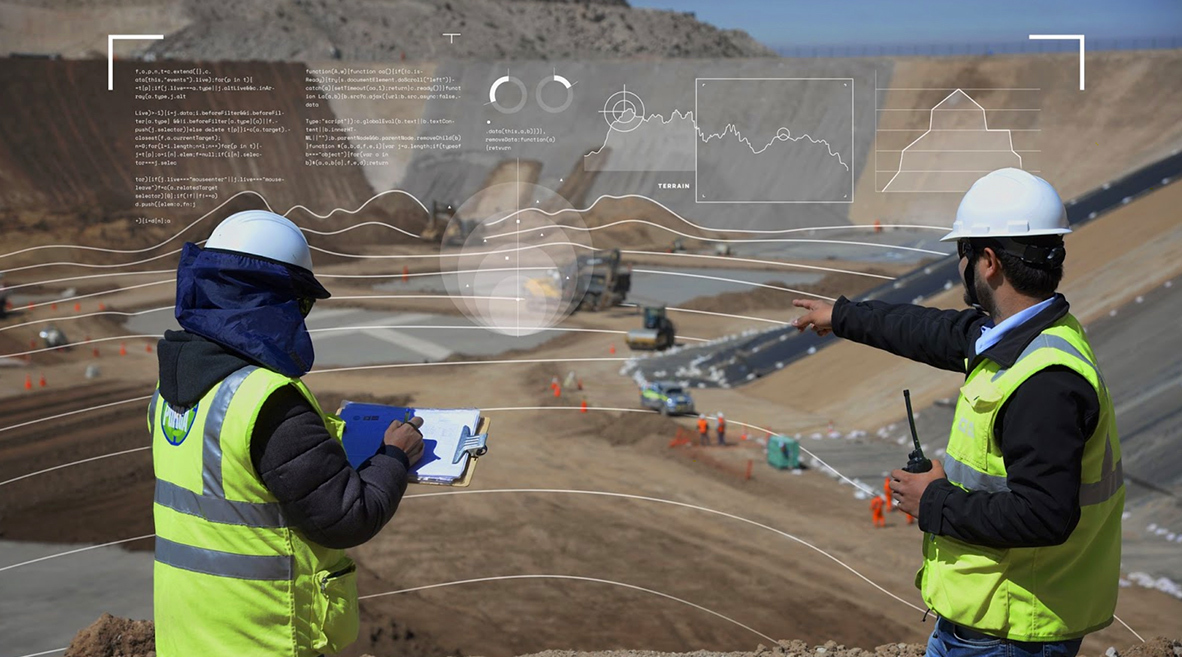RPA
Optimize the execution of your processes through automation with robots
What is RPA?
RPA is a technology that enables the automation of business processes using software robots that can operate 24 x 7 x 365.
They are mainly used to automate repetitive processes that lead to human error, tasks that require data validation – or tasks that generate large volumes of work.


1 ROBOT
One robot can carry out multiple tasks in collaboration with other robots.
5 to 10
times faster than a human when executing a repetitive process, without making mistakes.
24 x 7 x 365
service with full time availability.
45%
of the activities carried out in a company can be automated with robots.
Case Study
Automation of medical licenses with Robots
The Japanese company Komatsu Cummins in Chile, implemented the use of robotic processes automation to reduce time, simplify the proccess and have 100% efficiency in the administration of thousands of medical licenses.
Six months ago, medical licenses were really a headache for the human resources team of the Japanese company Komatsu Cummins. The more than seven hundred medical licenses that were processed per month, normally showed a 30% error in their digitization, says Luis Peña, head of IT projects.

Comprehensive and Robust Business Process Automation Service
Success Factors
RPA applications are software-based solutions that allow the automation of repetitive manual processes. The RPA implementations are low cost, since they can make use of the traditional computational resources for the execution of existing business rules, acting the same way that a user would. Please select each of the options in the following diagram if you wish to know details on the RPA applications:
Documents
Tasks with files in Excel, Word, etc.
Identify and extract data from PDF areas with electronic tax documents (sales tickets, invoices, etc.).
Carry out bank reconciliations.
Extract and verify attached documents and information from electronic mail.
Generate and send reports by e mail.
Integration with External Systems
Request information by means of its own or using third-party API’s
Execute actions through Web services.
Web Systems
Update and fill out forms in web systems.
Follow up on processes executed in internal or third-party systems (Applications and Web)
Request and extract data from internal or third-party systems (Applications and Web).
Software Systems
Enter data in corporate applications as well as in administration and management systems such as SAP.
Verify reliability of data between systems.
Documents
Tasks with files in Excel, Word, etc.
Identify and extract data from PDF areas with electronic tax documents (sales tickets, invoices, etc.).
Carry out bank reconciliations.
Extract and verify attached documents and information from electronic mail.
Generate and send reports by e mail.
Integration with External Systems
Request information by means of its own or using third-party API’s
Execute actions through Web services.
Web Systems
Update and fill out forms in web systems.
Follow up on processes executed in internal or third-party systems (Applications and Web)
Request and extract data from internal or third-party systems (Applications and Web).
Software Systems
Enter data in corporate applications as well as in administration and management systems such as SAP.
Verify reliability of data between systems.
Benefits
Eliminates human error in processes.
Reduces operational costs.
Improves the efficiency of robotized processes.
Increases productivity. Improves profitability.
Does not require making changes in the company’s systems or infrastructure.
Facilitates employees’ work.
RPA Discovery
Exploration of business processes through the use of methodological frameworks and ad-hoc tools, which allow the discovery and selection of suitable processes to be considered in the robotic pipeline, and prioritized based on the value dimension defined by the client.

Data Mining RPA Service
Analysis and interpretation of the data generated in the execution of business processes, in an aggregated and / or segregated form, through the use of business intelligence tools. The data when interpreted, contrasted and compared with each other, is transformed into understandable and visible information for business users, allowing them to identify opportunities and improvements in their processes, as well as to make decisions based on knowledge of the themselves.
Use Cases by Industry
- Funancial and Accounting Institutions
- Human Resources
- Insurance Companies
- Telecommunications
- Health
- Mining

- Download of Balances for Branches
- Payment of Payroll of Suppliers
- Perform Bank Reconciliations

- Recruitment of Human Resources
- Automatic Payment of Payroll
- Assignment of Work Shifts
- Issuance of Employment Certificates

- Automatic Assistance for the Insured (Policyholder)
- Processing and closing claims
- Analysis of loss registry

- Digitization of work orders
- Registration of sales and after-sales applications

- Integrations with legacy and governmental systems
- Automated medical licenses processing
- Synchronization of inventories with external systems
- Enter data in corporate applications and in administration and management systems such as SAP

- Monitoring of flow and well systems
- Loading and processing forms and spreadsheets
- Sending notifications through multiple channels
- Validation of field activities
Financial and Accounting Institutions

- Mass Bill Loading
- Download of Balances for Branches
- Payment of Payroll of Suppliers
- Perform Bank Reconciliations
Human Resources

- Recruitment of Human Resources
- Automatic Payment of Payroll
- Assignment of Work Shifts
- Issuance of Employment Certificates
Insurance Companies

- Insurance Policy Manager
- Automatic Assistance for the Insured (Policyholder)
- Processing and closing claims
- Analysis of loss registry
Telecommunications

- Digitization of work orders
- Registration of sales and after-sales applications
Health

- Integrations with legacy and governmental systems
- Automated medical licenses processing
- Synchronization of inventories with external systems
- Enter data in corporate applications and in administration and management systems such as SAP
Mining

- Monitoring of flow and well systems
- Loading and processing forms and spreadsheets
- Sending notifications through multiple channels
- Validation of field activities